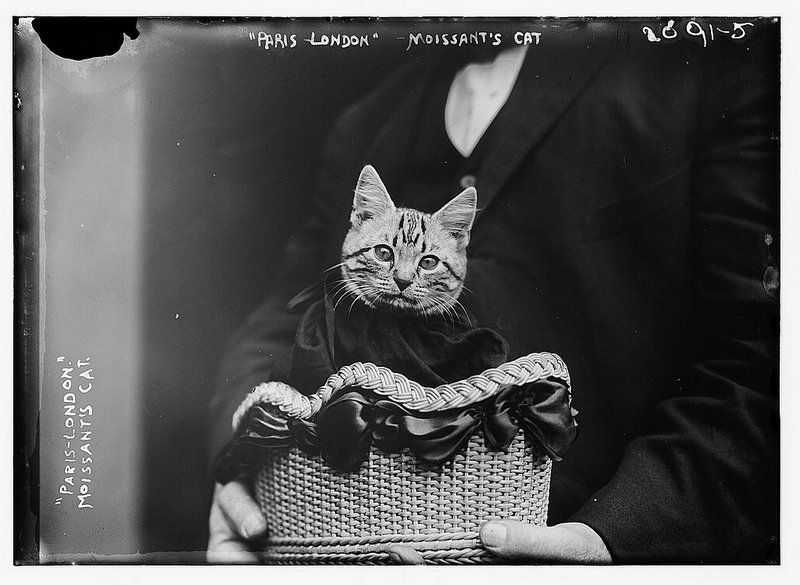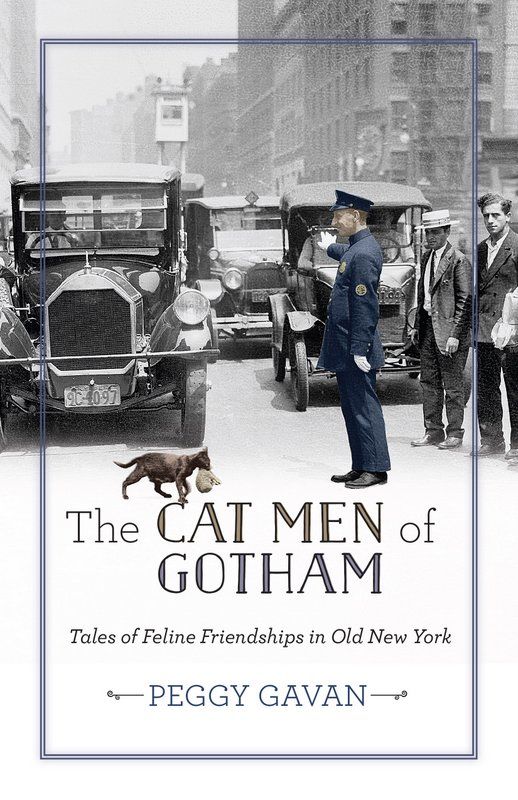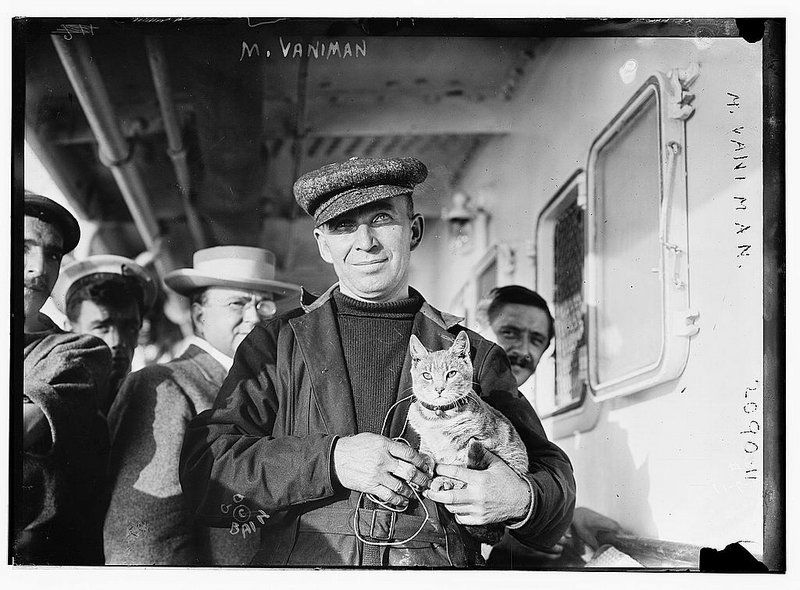Last-Minute NYC Holiday Gift Guide 🎁
We’ve created a holiday gift guide with presents for the intrepid New Yorker that should arrive just in time—



Paris-London was the kitty co-pilot of pioneer aviator John Moissant. In 1910, the dynamic cat-man duo won a race flying around the Statue of Liberty. Photo from Library of Congress, George Grantham Bain Collection
Lovers of furry friends and history buffs: be on the lookout for the release of The Cat Men Of Gotham, Tales of Feline Friendships in Old New York on May 3rd. Peggy Gavan, who runs the website Hatching Cat NYC and is a writer for Untapped Cities,
is publishing her first book for adults, building upon the many years she has spent collecting stories about the historic felines of New York City. This exciting non-fiction book is chock full of short stories describing the encounters and relationships of cats and men, which reveal larger stories about New York City’s history. Gavan artistically balances both factual evidence and heart-warming details to create a book full of engrossing tales of feline-human relations.
The book is cleverly divided into nine sections, one for each of a cat’s nine lives: seafaring cats, police cats, fire cats, artist/editorial cats, hospitality cats, theatrical cats, civil servant cats, good-luck cats, and lucky cats. Each section provides a collection of short stories, each from different time periods. The stories are categorized by the career field or occupation of the men who had relationships with these cats.

Book cover of The Cat Men Of Gotham, Tales of Feline Friendships in Old New York
Stories in the book include many places Untapped Cities has covered before. For example, the Brooklyn Navy Yard in which the story, “The Brave and Brawny Cats of the Brooklyn Navy Yard” is set in 1893 shares the stories of multiple cats and kittens that were brought to the yard as mousers to protect the rigging from rats. Although some cats at the navy yard remained stationary, many also voyaged on sea expeditions with sailors, one even surviving an explosion on the USS Maine. Sailors fervently believed in the luck a ship cat brought. So when Olaf the Viking Cat went overboard on the Norwegian ship the Sud Americano, “Cat overboard!” was called and the ship captain ordered an “immediate rescue.” At least seven sailors rescued Olaf and a large party was thrown in his honor that evening.

Melvin Vaniman and his good-luck cat, Trent, about the steamship Trent in October 1910. Photo from Library of Congress, George Grantham Bain Collection.
Another section has stories on feline relationships with NYPD officers at The Tombs in “The Tombs’ Feline Warden That Befriended Prisoners on Murderers’ Row” that describes daily visits by a prison police cat to convicted murderer Carlyle Wentworth Harris. Both officers and prisoners cherished this prison cat enough to get him stuffed after his death in an officer’s arms, and to remain in the prison quarters at The Tombs — quite the story.
Other cats in the book with great stories include Smoke, the famous Lafayette Street firehouse cat that went on strike; Minnie, a cat at a mens-only speakeasy; the feline police squad of New York’s General Post Office; Jerry Fox, the spectacled cat of Brooklyn who saved Borough Hall; Bright Eyes, the Good-Luck Kitten of the Battery-Joralemon Street tunnel; Olympia, the Dewey Arch Cat, and Kaiser, the Feline Survivor of the Great Equitable Life Building fire.
Revealed story after story is the special relationship between humans and their feline companions, and the humans proud enough to regale many a newspaper about their cat co-workers. This narrative persists today – whether a begrudging respect for the cat or a full-on appreciation – as seen in the compilations shared in books like Shop Cats of New York. What sets Gavan’s historical stories apart are the first person reports that she has found in old newspapers. She conveys this special bond between cat and human by consistently referring to the cats in her stories as formal employees of where they worked, echoing the type of terminology the people of the time would use. Tom, who survived the USS Maine explosion was “one of about ninety crew members to survive.” In the section on police cats, she writes that every police department in New York City “had at least one cat on the job. According to The New York Times, there were more than one hundred cats on active duty throughout the city’s five boroughs.” One heartening story shows that despite attempts to eradicate the cats at the Navy Yard over the years, it was the sailors and workers themselves that often saved the creatures by defying direct military orders.
Cat-lovers and New York City history buffs alike will thoroughly enjoy The Cat Men Of Gotham, Tales of Feline Friendships in Old New York and the short stories within. You can visit Peggy Gavan’s website for more true animal tales in Old New York.
Next, check out 10 of NYC’s Most Famous Cats.
Subscribe to our newsletter